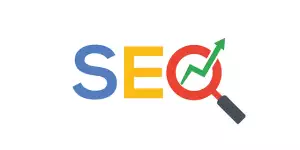Technical SEO Training is vital for maximizing website visibility and performance in a competitive digital environment. By understanding and optimizing key technical aspects, such as crawlability, indexing, mobile responsiveness, and schema markup, businesses can enhance their search engine rankings and user experience. This comprehensive training covers on-page optimization, website structure, XML sitemaps, robots.txt files, and URL structuring, ensuring websites are optimized for both search engines and users, ultimately driving organic traffic and online success.
“Unleash your SEO potential with our comprehensive guide to SERP Advanced SEO. This class delves into the intricate world of search engine results pages (SERPs) and their pivotal role in shaping online visibility. We explore essential components like Technical SEO, a robust foundation for enhancing website discoverability. Learn effective strategies for on-page optimization, mobile and voice search optimization, and structured data markup. Our training equips you with advanced tools and techniques to master technical SEO analysis, ensuring your site excels in today’s competitive digital landscape.”
Understanding SERPs and Their Role in SEO

Search Engine Results Pages (SERPs) are a fundamental aspect of search engine optimization (SEO). They represent the gateway between online users seeking information and the websites that provide it. In essence, SERPs are the visual representation of a search engine’s attempt to organize and present relevant content to users based on their queries. Understanding how search engines crawl, index, and rank web pages is crucial for anyone undergoing Technical SEO Training.
By analyzing SERPs, digital marketers can gain valuable insights into user behavior, identify trends in search terms, and optimize websites accordingly. This involves ensuring that a website’s structure, content, and metadata align with the preferences of both search algorithms and human users. Effective SERP optimization enhances a site’s visibility, drives organic traffic, and ultimately contributes to improved online performance and success in today’s competitive digital landscape.
Technical SEO: The Foundation of Search Visibility

Technical SEO forms the bedrock upon which online visibility is built. It involves optimizing a website’s technical aspects, from site structure to speed and indexing, to ensure search engines can access, interpret, and rank your pages effectively. A robust Technical SEO Training equips website owners with the knowledge to address these fundamental issues, ensuring their sites are not just visible but also user-friendly and accessible to all search engine crawlers.
Proper implementation of Technical SEO practices enhances crawlability, a critical factor for any SERP (Search Engine Results Page) success. By fixing broken links, implementing structured data markup, optimizing XML sitemaps, and ensuring mobile responsiveness, website owners can significantly improve their site’s performance in organic searches. These strategies not only boost search visibility but also contribute to a better user experience, which is a key ranking factor for modern search engines.
On-Page Optimization: A Deep Dive into Technical Aspects

On-Page Optimization, a cornerstone of any robust Technical SEO Training, involves meticulously crafting web pages to align with search engine algorithms. This includes optimizing essential technical elements like structured data markup, ensuring fast page loading speeds, implementing responsive design for mobile usability, and creating a hierarchical site structure that aids both users and search crawlers in navigating the website.
A deep dive into these aspects reveals the significance of clean, organized HTML code, effective use of headings to establish content hierarchy, and strategic placement of keywords within meta tags, alt text, and valuable, unique content. These practices not only enhance a page’s relevance for targeted search queries but also contribute to better indexing and ranking by search engines.
Website Structure and Navigation for Enhanced Crawling

A well-structured website is a cornerstone of successful SEO strategies, and understanding how search engines crawl and index pages is crucial in any Technical SEO training. Website structure refers to the organization and hierarchy of your web pages, which significantly impacts a site’s visibility and user experience. A clean and intuitive navigation system ensures that both search engine crawlers and visitors can easily explore your content.
By implementing a logical website structure, you guide search engines to understand the relevance and importance of your pages. This involves using relevant keywords in URLs, creating a hierarchical menu with proper categorization, and ensuring internal linking strategies connect related content. Proper navigation helps search engines efficiently crawl through your site, leading to better indexing and increased opportunities for ranking higher on SERPs (Search Engine Results Pages).
Optimizing for Mobile and Voice Search

In today’s digital landscape, mobile and voice search have become paramount for online visibility. A comprehensive Technical SEO Training should equip businesses with strategies to optimize content for these rapidly growing search methods. With a majority of internet users accessing information through smartphones, ensuring your website is mobile-friendly is no longer an option but a necessity. This includes responsive design, fast loading times, and easy navigation on smaller screens.
Additionally, voice search technology is transforming how people interact with search engines. As virtual assistants and smart speakers gain popularity, optimizing content for natural language queries becomes crucial. Using long-tail keywords, structured data markup, and focused content can enhance a website’s performance in voice search results. These optimizations ensure that your business stays relevant and accessible to a wider audience across various devices and search behaviors.
XML Sitemaps, Robots.txt, and Indexing Control

In the realm of Technical SEO Training, understanding XML Sitemaps, Robots.txt files, and Indexing Control is paramount for any website aiming to excel in SERP rankings. An XML Sitemap acts as a roadmap for search engines, allowing them to efficiently discover and crawl every page on your site. This is particularly crucial for dynamic websites with frequently changing content, ensuring all pages are indexed accurately and promptly.
Robots.txt, on the other hand, serves as a set of instructions for web crawlers, guiding them on which pages or sections of a website they can access and index. It enables website owners to control the crawlability of their site, blocking access to private or duplicate content. Effective use of Robots.txt is essential in maintaining the integrity of your website’s indexing process, ensuring search engines focus on relevant, high-quality content for better SERP performance.
Implementing Structured Data Markup for Rich Results

Implementing Structured Data Markup (SDM) is a powerful strategy within Technical SEO Training, enabling search engines to better understand and display content on web pages. By using SDM, developers can provide rich snippets of information directly in the search results, enhancing the user experience with more detailed and visually appealing results. This is particularly beneficial for e-commerce sites, news portals, and any business aiming to stand out in a crowded digital landscape.
SDM involves adding specific code to web pages, known as markup, which highlights key elements like product details, reviews, recipes, or events. Search engines interpret this data, presenting it as rich results in the search engine results page (SERP). This not only increases click-through rates but also fosters trust and confidence among potential customers, making your site a valuable resource even before they visit.
URL Optimization and Its Impact on User Experience

URL optimization is a crucial aspect of Technical SEO Training that directly impacts user experience. When crafting URLs, it’s essential to keep them clean, descriptive, and structured. This involves using relevant keywords, maintaining a consistent format, and avoiding overly complex or dynamic URLs. A well-optimized URL provides users with an immediate understanding of the page’s content, enhances crawlability for search engines, and improves load times. These factors collectively contribute to better user engagement and lower bounce rates.
By focusing on URL optimization, SERP rankings can be significantly influenced. Search engines prioritize pages with URLs that are easy to read and understand, reflecting positively on their quality and relevance. This, in turn, leads to higher visibility on search result pages (SERPs), driving more organic traffic to the website. Ultimately, a user-friendly URL structure forms the backbone of a successful online presence, ensuring that both search engines and visitors can easily navigate and interact with the website’s content.
Advanced Tools for Technical SEO Analysis and Monitoring

In today’s digital era, successful online visibility requires more than just keyword-rich content and optimized meta tags; it demands a comprehensive understanding of Technical SEO. A robust Technical SEO Training equips users with advanced tools to analyze and monitor critical aspects of website structure that search engines scrutinize. These include crawling efficiency, site speed optimization, mobile responsiveness, schema markup implementation, and XML sitemaps creation – all vital elements for achieving high rankings on SERPs.
With access to sophisticated diagnostic tools, users can identify technical issues hindering their site’s performance. For instance, a website might struggle with broken links or poorly indexed pages, both of which impact user experience and search engine accessibility. By leveraging these insights, SEO practitioners can implement targeted fixes, ensuring their sites are optimized for both users and search engines alike.
